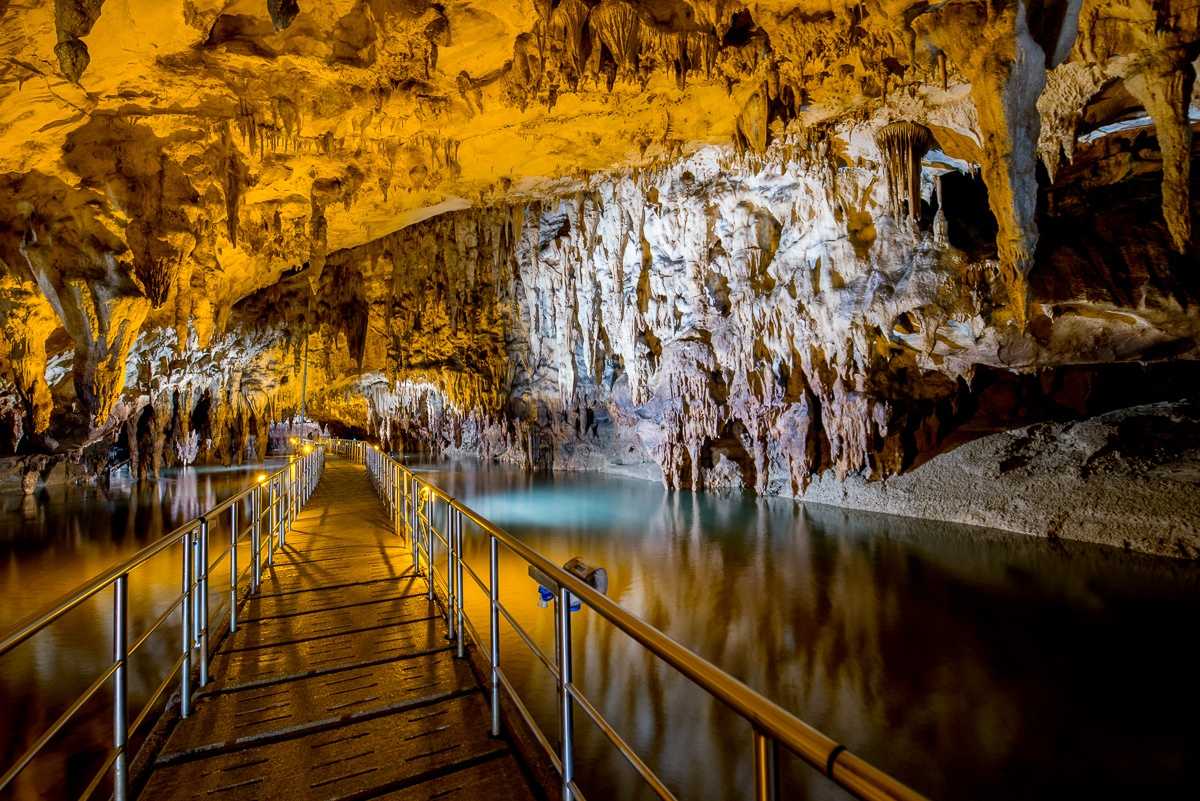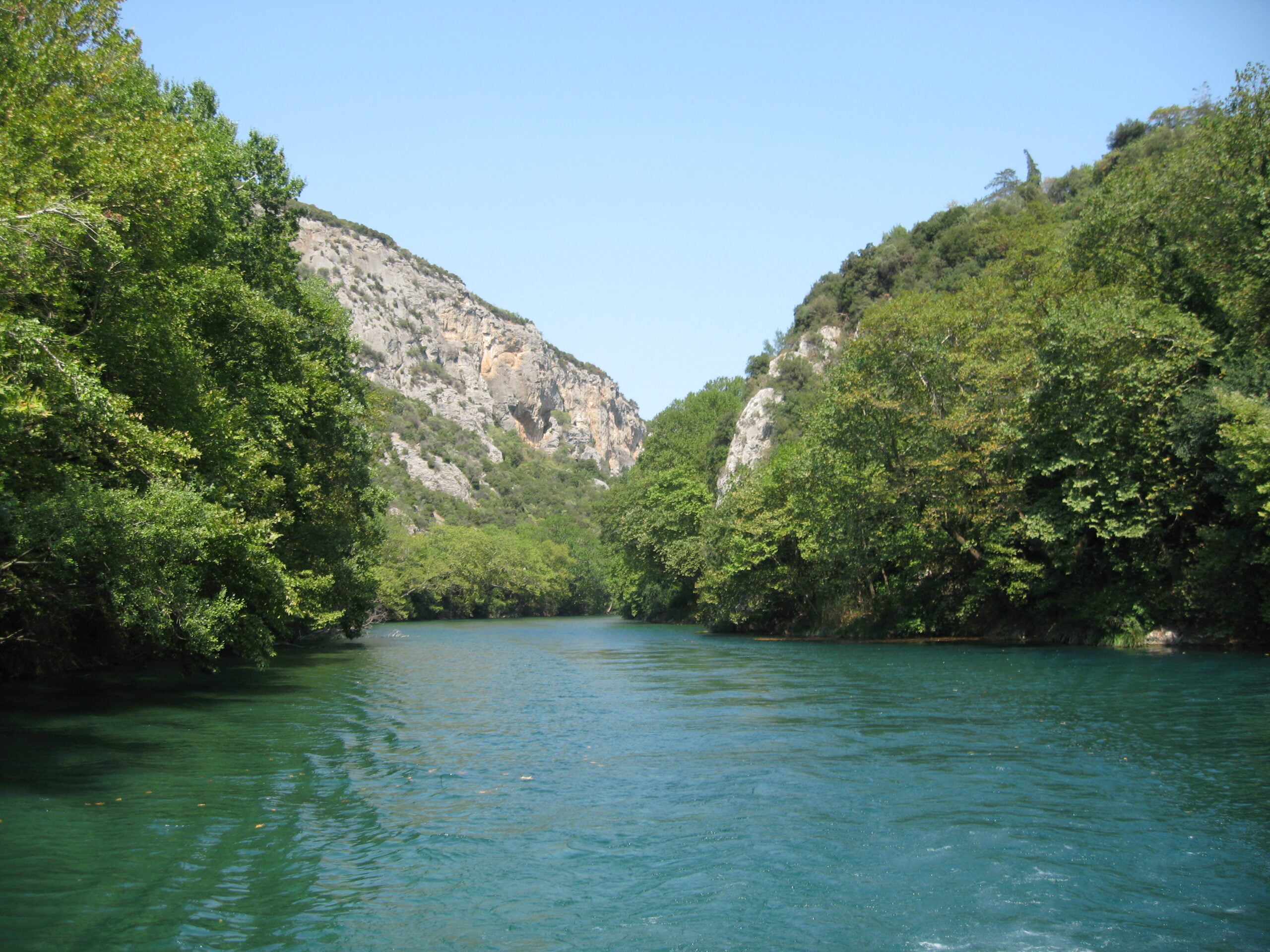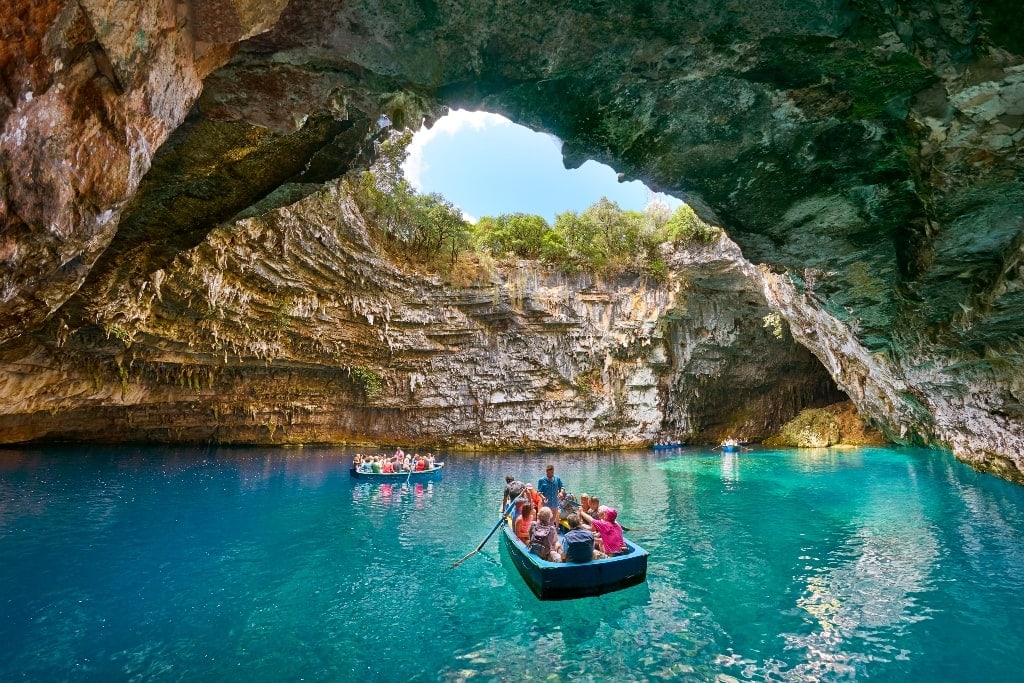Petralona Cave
The Cave of Petralona in Chalkidiki, an important link in the chain of human evolution, was discovered by chance in May 1959. Philippos Chatzaridis, an inhabitant of the village of Petralona in Chalkidiki, was looking for water when he stumbled across a cave on Mt Katsika, roughly 300 metres above sea level.
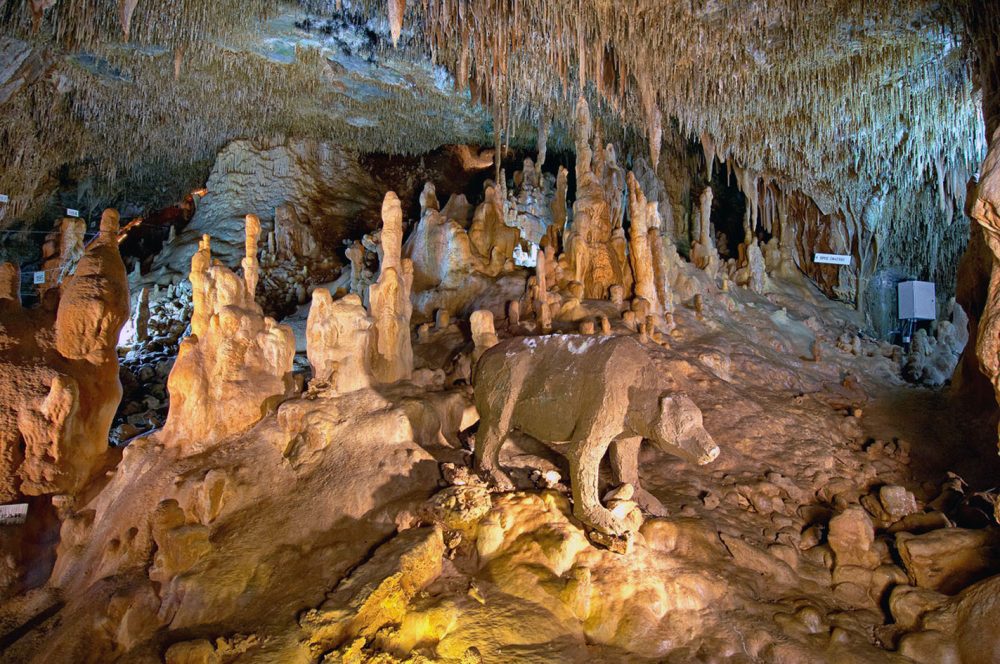
A year later, in the same area, Christos Sarriyiannidis from the same village found the fossilized skull of a prehistoric human, covered with stalactite material.
This discovery was to make many scientists revise their views concerning the prehistoric inhabitants of Europe.
Researchers estimate that the Archanthropus skull, complete except for the lower jaw, may be about 700,000 years old, making it the oldest European. It is the skull of a man who died aged 32, a ripe old age by the standards of the time.
In the same cave were also found fossilised traces of the oldest fire ever lit by human hand, dated to about 1,000,000 years ago. The ancient hominids of Petralona lived here about a million years ago. They first entered the Petralona cave when the climate began to get colder, at the beginning of the Pleistocene, 1,700,000 years ago. The cave offered them shelter from the cold, as it has a constant temperature of 17ο C.
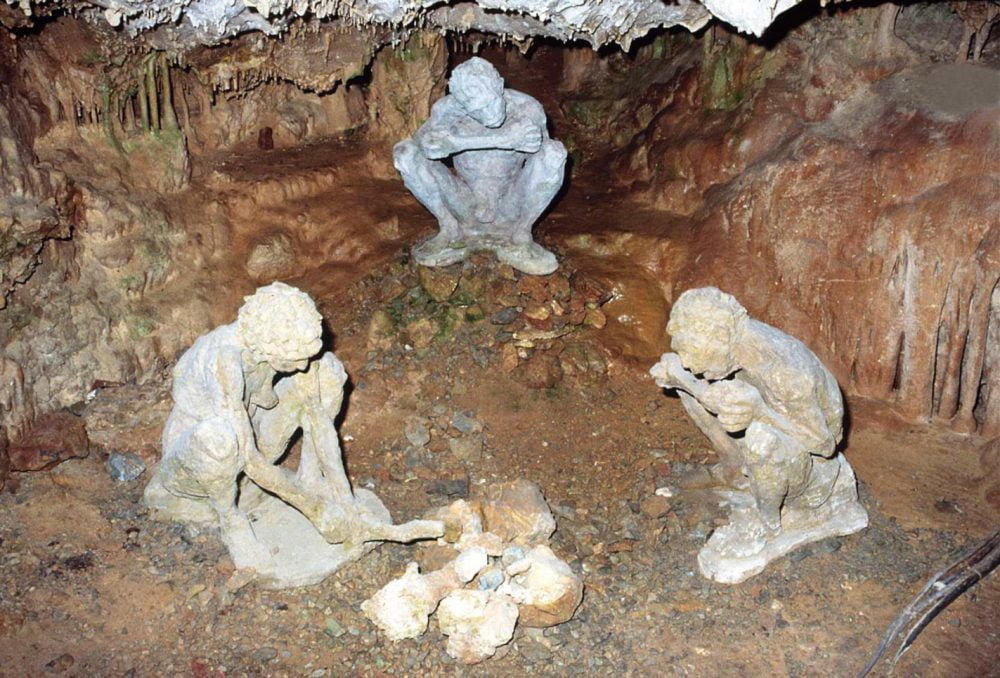
The cave also contained bones from various animals including bear, hyena, rhinoceros, lion, deer, panther, 25 species of bird, 16 species of rodent and 17 species of bat.
Petralona Cave is roughly 2 kilometres long. The cave entrance is an artificial tunnel about 100 metres long, running through deposits from the erosion of the mountain side which have covered the old, natural entrance. The temperature inside the cave remains constant at about 17 (+1) degrees centigrade all year round. There are display cases on either side, containing stone and bone tools, bones, jawbones and teeth from various animals.
